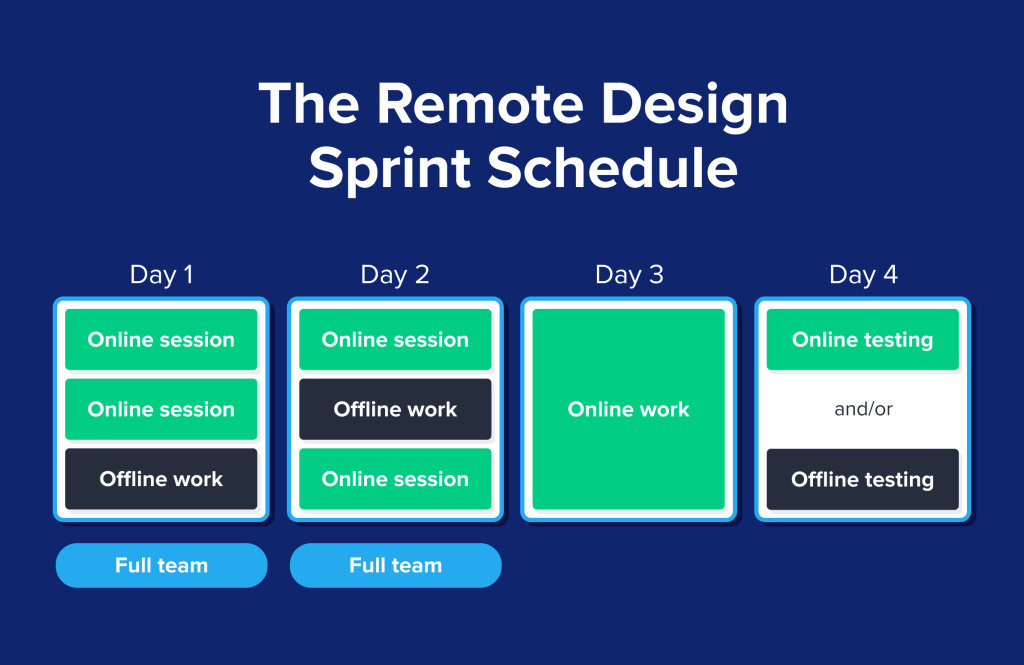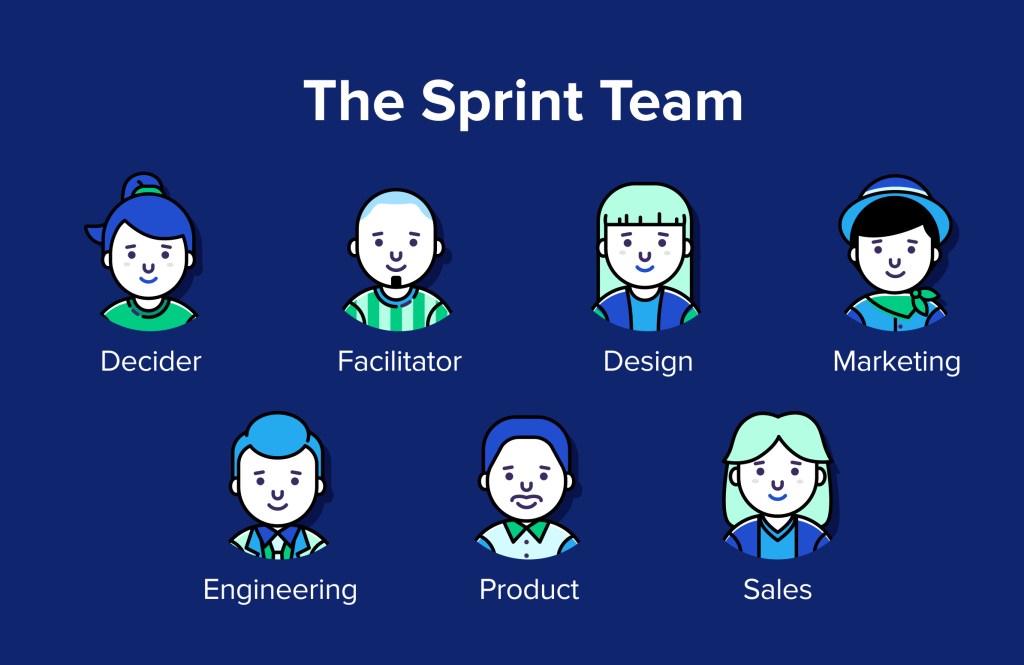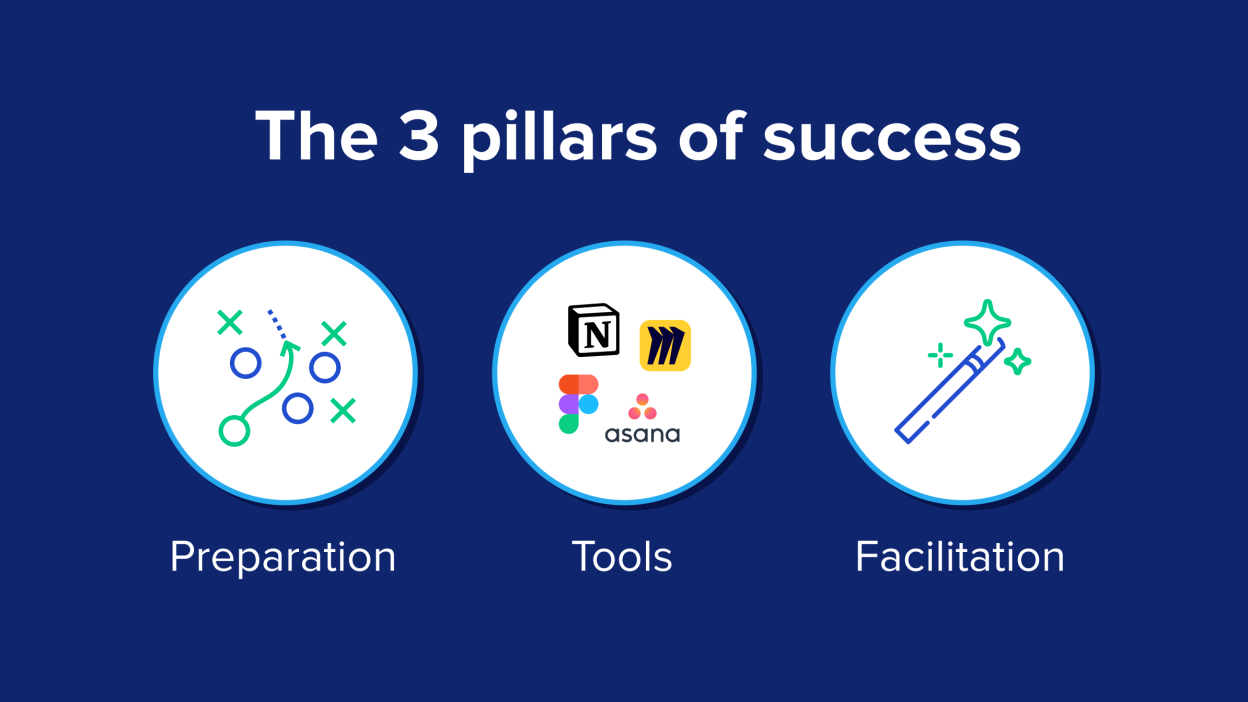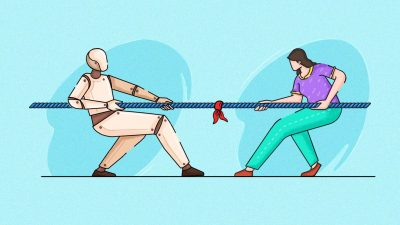Introduction
Remote Design Sprint have revolutionized how teams solve big problems and test new ideas—fast. Traditionally, these five-day workshops brought cross-functional teams together in one room to ideate, prototype, and validate solutions. But with remote work now the norm, design sprints have gone virtual. Running a remote design sprint presents unique challenges: time zones, digital fatigue, and the lack of in-person energy. Yet, with the right approach, remote sprints can be just as effective—sometimes even more so.
This blog will guide you through every step of running a successful remote design sprint. You’ll learn how to prepare, choose the right tools, keep your team engaged, and deliver actionable results—no matter where your team is located.
What Is a Design Sprint?
- Definition: A time-boxed, structured process for solving problems and testing ideas in just five days.
- Origins: Developed at Google Ventures by Jake Knapp.
- Phases: Understand, Ideate, Decide, Prototype, Test.
- Benefits: Rapid innovation, cross-team alignment, reduced risk, and validated learning.
Why Go Remote?
- Global teams: Talent is everywhere; remote sprints enable diverse participation.
- Flexibility: No travel, easier scheduling, and cost savings.
- Documentation: Digital tools make it easier to capture and share outcomes.
- Challenges: Time zones, engagement, tech issues, and digital fatigue.
Preparing for a Remote Design Sprint
1. Define the Challenge
- Clear problem statement and sprint goal.
- Align stakeholders on objectives.
2. Assemble the Right Team
- Decider, Facilitator, Designers, Developers, Marketers, and Subject Matter Experts.
- Keep the group small (5–7 people) for focus.
3. Choose the Right Tools
- Video conferencing: Zoom, Google Meet, Microsoft Teams.
- Collaboration: Miro, Mural, FigJam for whiteboarding.
- Prototyping: Figma, InVision, Adobe XD.
- Communication: Slack, Teams, or dedicated sprint channels.
4. Schedule Thoughtfully
- Consider time zones and energy levels.
- Break sessions into shorter blocks (2–3 hours) with breaks.
5. Pre-Sprint Homework
- Share background materials, user research, and sprint brief.
- Set expectations for participation and outcomes.

Running the Remote Design Sprint (Day-by-Day Breakdown)
1: Understand & Map
- Kickoff meeting: Introduce the challenge, goals, and agenda.
- Expert interviews: Invite stakeholders to share insights.
- Map the user journey: Use digital whiteboards.
- Define the target: Agree on the sprint focus.
2: Sketch & Ideate
- Lightning demos: Review inspiring solutions.
- Sketching: Each participant creates solution sketches (Crazy 8s exercise).
- Share and discuss sketches asynchronously or in breakout rooms.
3: Decide
- Present sketches: Use voting tools (dot voting in Miro/Mural).
- Storyboard: Build a step-by-step plan for the prototype.
- Assign roles for prototyping.
4: Prototype
- Rapid prototyping: Use Figma or InVision for clickable prototypes.
- Collaborate in real-time or assign sections to team members.
- Prepare user testing scripts and scenarios.
Day 5: Test
- Recruit users: Schedule remote interviews or usability tests.
- Conduct tests: Record sessions for later review.
- Debrief: Gather feedback, discuss learnings, and decide next steps.
Tips for Remote Engagement and Collaboration
1. Set Clear Ground Rules
- Cameras on, mute when not speaking, respect time limits.
2. Use Breakout Rooms
- Small group discussions for deeper dives.
3. Leverage Asynchronous Work
- Allow time for solo sketching, voting, and feedback.

4. Keep Sessions Short and Focused
- Avoid digital fatigue with 2–3 hour blocks and regular breaks.
5. Foster Inclusivity
- Encourage quieter voices, use anonymous voting, and check in regularly.
6. Celebrate Progress
- Share wins, shout-outs, and fun moments to keep morale high.
Tools and Templates for Remote Sprints
- Miro/Mural: Pre-built sprint templates, sticky notes, voting, and mapping tools.
- Figma: Collaborative prototyping and design.
- Google Docs/Slides: For documentation and sharing.
- UserTesting.com, Lookback: For remote user testing.
- Slack/Teams: For ongoing communication and quick questions.
Common Pitfalls and How to Avoid Them
- Poor preparation: Leads to confusion and wasted time.
- Tech issues: Test tools and connections in advance.
- Lack of engagement: Use interactive activities and rotate facilitators.
- Time zone clashes: Use Doodle polls to find overlap, record sessions for async review.
- Scope creep: Stick to the sprint goal and timebox discussions.

Measuring Success and Next Steps
- Did you meet the sprint goal?
- What did users say? Gather actionable feedback.
- What’s next? Decide whether to iterate, pivot, or implement.
- Document outcomes: Share a sprint summary with stakeholders.
- Retrospective: What worked, what didn’t, and how to improve next time.
Conclusion
Remote design sprints are a powerful way to solve big problems, align teams, and validate ideas—no matter where your team is located. With thoughtful preparation, the right tools, and a focus on engagement, you can run sprints that are just as effective as in-person workshops. Embrace the flexibility of remote work, experiment with new formats, and keep your team connected. The future of innovation is distributed—and design sprints are leading the way.





